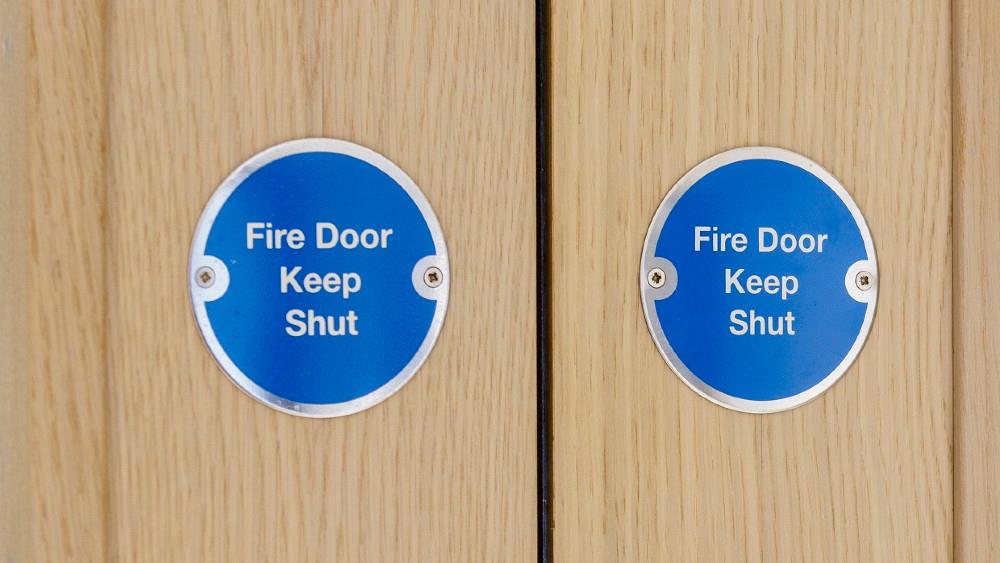

Helen Hewitt, CEO of the British Woodworking Federation explains how can merchants can ensure that the fire doors they recommend to customers will perform as designed.
Tradespeople rely on the advice and expertise of experienced builders’ merchants in selecting the right products to meet a given specification or design.
But there are additional complexities when it comes to safety products, such as fire doors, and merchants must fulfil obligations and manage liability under the Consumer Protection Law 2015.
This means that only products that are fit for purpose and supplied to allow customers to install and maintain the product correctly to achieve its stated performance should be retailed. So how can merchants ensure that the fire doors they recommend to customers will perform as designed?
Firstly, it is crucial to recognise that a fire door is not just a standard door; it plays a vital role in the building’s passive fire protection system. Fire doors help divide a building into compartments to slow the spread of fire and smoke. This provides occupants with time to escape the building by keeping routes clear of smoke and fire and allowing emergency services to enter the building to tackle the fire.
Due to this, it’s not simply a case of buying just a door – when a customer asks for a fire door, what they actually require is a number of different compatible components as well as the fire door leaf (a single panel door), which will enable it to perform in the event of a fire.
For a fire door to be fit for purpose and act as it’s designed to during a fire, it needs to be installed with the correct and compatible components as detailed on the door leaf fire certificate.
Compatible components are fire tested and include the door leaf, door frame or lining, intumescent seals, smoke seals, hinges, latch or lock, door closers and, where required, letterplates, air transfer grilles, threshold seals, door views, and intumescent pads for ironmongery.
Together, these components enable the fire door to compartmentalise fire and smoke, and help prevent them spreading. But with product manufacturers claiming that their products are tested and achieve a specific performance level, what should you and your customers look for?
Confirmation of fire door performance
Proof of performance is vital for all building products – none more so than fire doors. There are three ways that manufacturers can evidence their compliance:
Self-declaration: a manufacturer claims that a door or doorset ‘complies with’ or is ‘tested to’ a certain standard. However, these types of claim provide no guarantee or proof that the product meets the correct standards, or that it will perform as stated.
Test certificate: a test certificate confirms that a manufacturer’s fire door has been tested and there’s a certificate as proof. However, this only offers a snapshot of the product test so needs to be considered with caution.
Third-party certification: manufacturers with third-party certificated products have completed independent third-party testing to verify their fire door’s design, performance, manufacturing process and quality assurance during manufacture. As part of this process, the company is audited to ensure that management and manufacturing processes and systems are in place to maintain product consistency with the sample product which was tested. Added to this, the product and manufacturer are regularly tested and audited to confirm standards are consistently met.
Third-party certification offers as thorough an approach to fire door safety as possible, providing peace of mind that the fire door will perform as designed in the event of a fire.
Third-party certification is the cornerstone of the BWF Fire Door Alliance and membership is currently only open to companies holding third-party certification under either the Warringtonfire Certifire or BM TRADA Q-Mark Schemes.
So what are the benefits of third-party certification for merchants and customers
As well as being able to offer customers the best performing products, merchants must also reduce their exposure to liability when it comes to fire safety products.
In the case of fire doors, compatibility of all the associated products and components with the fire door leaf certificate is critical, as these maintain third party certification and prove that a product is fit for purpose.
To support merchants and the wider industry, the BWF Fire Door Alliance has downloadable resources including fact cards and best practice guides which provide vital information on passive fire protection, fire doors and third-party certification, and Building Regulations.
The performance of a fire door can mean the difference between life and death in the event of a fire, and any failure of products can also have legal repercussions through supply chain liability.
By selecting a third-party certificated fire door from a BWF Fire Door Alliance member, builders’ merchants can be confident that the fire door will perform as designed to compartmentalise the smoke and fire, and help save lives.
For more information, please visit: https://firedoors.bwf.org.uk/